Essential functions of Cdt1 and Orc6 during origin licensing
llistat de metadades
Autor/a
Director/a
Frigola Mas, Jordi
Tutor/a
Massaguer i Vall-llovera, Anna
Data de defensa
2025-07-28
Pàgines
127 p.
Departament/Institut
Universitat de Girona. Departament de Biologia
Institut d'Investigació Biomèdica de Girona Dr. Josep Trueta
Programa de doctorat
Programa de Doctorat en Biologia Molecular, Biomedicina i Salut
Resum
Origin licensing ensures that eukaryotic cells replicate their DNA precisely once per cell cycle. The ORC complex, together with the licensing factors Cdc6 and Cdt1, load the core of the replicative helicase (M2-7), as a double hexamer (DH). Licensing starts assembling the helicase loaders ring around duplex DNA (ORC/Cdc6 or OC). Later, this complex recruits a second ring, integrated by the core of the helicase plus the loading factor Cdt1 (M2-7/Cdt1 or MC). In a stepwise manner, both rings (OC and MC) are stacked and ultimately, results in the DH assembling. In yeast, all the licensing proteins are essential. Their specific function, at molecular and mechanistic level, has been an active area of research for the last 15 years. This thesis aims to understand the essential function of two licensing factors, Cdt1 and Orc6. Both proteins are the only licensing factors not related to the ATPase-Associated with various cellular Activities (AAA+) superfamily. We found that DNA insertion during licensing occurs through a series of synchronized events in which Cdt1 plays a critical role. The stacking between the OC and the MC complexes enable the insertion of duplex DNA into the M2-7. This process requires the conserved C terminal winged-helix domain (C-WHD) of Cdt1. Without this domain, the M2-7 splits into two halves. Specifically, the C-WHD of Cdt1 must interact with the C-WHD of Mcm6, enabling the latching between the MC and the OC rings, through a conserved interaction with the Orc5 AAA+ lid. Orc6 has two domains, N terminal domain (NTD) and C terminal domain (CTD), separated by a long linker. Our results suggest, that these domains have independent functions during licensing and surprisingly, both domains are functional even if not physically linked. While the Orc6 CTD contributes to the initial recruitment of the MC by OC complex, the NTD is essential in the latest stages of licensing. Particularly, it is required to close and/or stabilize the closed form of the M2-7. Additionally, we also have unveiled how ORC’s CDK phosphorylation ensure once per cell cycle. While Orc2 phosphorylation inhibits the initial recruitment of the MC by the OC, Orc6 phosphorylation inhibits a latest stage in licensing, through its NTD
Paraules clau
Replicació; Replicación; Replication; Preparació d'orígens; Preparación de orígenes; Origin licensing; Cdt1; Orc6; Proteïnes; Proteínas; Proteins; ADN; Cicle cel·lular; Ciclo celular; Cell cycle; Biologia cel·lular; Biología celular; Cellular biology
Matèries
576 - Biologia cel·lular i subcel·lular. Citologia; 577 - Bioquímica. Biologia molecular. Biofísica
Citació recomanada
Drets
ADVERTIMENT. Tots els drets reservats. L'accés als continguts d'aquesta tesi doctoral i la seva utilització ha de respectar els drets de la persona autora. Pot ser utilitzada per a consulta o estudi personal, així com en activitats o materials d'investigació i docència en els termes establerts a l'art. 32 del Text Refós de la Llei de Propietat Intel·lectual (RDL 1/1996). Per altres utilitzacions es requereix l'autorització prèvia i expressa de la persona autora. En qualsevol cas, en la utilització dels seus continguts caldrà indicar de forma clara el nom i cognoms de la persona autora i el títol de la tesi doctoral. No s'autoritza la seva reproducció o altres formes d'explotació efectuades amb finalitats de lucre ni la seva comunicació pública des d'un lloc aliè al servei TDX. Tampoc s'autoritza la presentació del seu contingut en una finestra o marc aliè a TDX (framing). Aquesta reserva de drets afecta tant als continguts de la tesi com als seus resums i índexs.
Aquest element apareix en la col·lecció o col·leccions següent(s)
Departament de Biologia [131]


